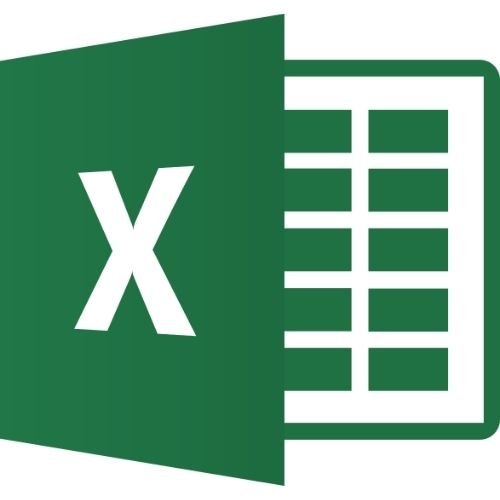Graphics Design: A Comprehensive Overview
Introduction
Graphic design is the art and practice of creating visual content to communicate messages. Applying visual hierarchy, page layout techniques, and typography, graphic designers use pictures, colors, and symbols to meet users’ specific needs. It’s a field that merges creativity with technology, offering a platform to convey ideas in visually appealing ways.
Key Concepts in Graphic Design
Principles of Design
- Explanation: Fundamental guidelines that govern the creation of effective and aesthetically pleasing designs.
- Examples:
- Balance: Distributing visual elements evenly.
- Contrast: Using opposing elements (e.g., light vs. dark) to create interest.
Typography
- Explanation: The art of arranging text in a way that makes it legible, readable, and visually appealing.
- Examples:
- Choosing fonts that convey the brand’s personality.
- Adjusting kerning and leading for better readability.
Color Theory
- Explanation: The study of how colors interact and the visual effects of color combinations.
- Examples:
- Using complementary colors to create vibrancy.
- Applying monochromatic color schemes for a cohesive look.
Layout and Composition
- Explanation: The arrangement of visual elements in a design to guide the viewer’s eye and convey a clear message.
- Examples:
- Utilizing the rule of thirds to create a balanced composition.
- Creating a grid system for a structured and organized design.
Branding and Identity Design
- Explanation: Creating a visual identity for a brand, including logos, color schemes, and other visual elements.
- Examples:
- Designing a logo that reflects the company’s mission.
- Developing a consistent brand color palette and typography set.
Digital vs. Print Design
- Explanation: The differences and considerations between designing for digital screens and print media.
- Examples:
- Using RGB color mode for digital designs.
- Applying CMYK color mode and considering bleed areas for print designs.
Software Tools
- Explanation: Essential tools and software used in graphic design to create and edit visual content.
- Examples:
- Adobe Photoshop for photo editing and manipulation.
- Adobe Illustrator for vector-based designs and illustrations.
Image Editing and Manipulation
- Explanation: The process of altering images to improve them or create a specific effect.
- Examples:
- Retouching photos to enhance details.
- Creating surreal compositions through photo manipulation.
Illustration
- Explanation: The use of drawing or digital techniques to create images that tell a story or convey an idea.
- Examples:
- Hand-drawn illustrations for a children’s book.
- Digital illustrations for website graphics.
Motion Graphics
- Explanation: The art of bringing graphic design elements to life through animation and movement.
- Examples:
- Creating animated logos for brand intros.
- Designing explainer videos with kinetic typography.
User Interface (UI) Design
- Explanation: The design of user interfaces for software, websites, or applications, focusing on looks and style.
- Examples:
- Designing a clean and intuitive mobile app interface.
- Creating interactive prototypes for a website.
User Experience (UX) Design
- Explanation: The process of enhancing user satisfaction by improving the usability, accessibility, and pleasure provided in the interaction with a product.
- Examples:
- Conducting user research to inform design decisions.
- Creating wireframes and user flows for an app.
Packaging Design
- Explanation: Designing product packaging to protect, communicate, and market the product.
- Examples:
- Designing a sustainable and eye-catching packaging for a cosmetic product.
- Creating a unique unboxing experience through thoughtful packaging design.
Environmental Design
- Explanation: The design of environments or physical spaces that people interact with, such as exhibitions or public spaces.
- Examples:
- Designing signage and wayfinding systems for a museum.
- Creating engaging trade show booth designs.
Visual Branding and Identity
- Explanation: Creating a consistent visual identity that reflects a brand’s values and mission.
- Examples:
- Developing a brand’s logo, color palette, and typography.
- Designing business cards, letterheads, and other branded materials.
Print Design
- Explanation: Creating designs for printed materials like brochures, business cards, and posters.
- Examples:
- Designing a flyer for an event.
- Creating a visually compelling magazine layout.
Web and Mobile Design
- Explanation: Designing websites and mobile applications with a focus on aesthetics and user experience.
- Examples:
- Designing a responsive website that adapts to different screen sizes.
- Creating a user-friendly mobile app interface.
Advertising Design
- Explanation: Creating visual content to promote products or services through various forms of media.
- Examples:
- Designing a billboard advertisement.
- Creating social media ads that engage users.
Infographics
- Explanation: Visual representations of data or information designed to make complex information more digestible.
- Examples:
- Designing an infographic that explains a company’s annual report.
- Creating a visual timeline of a product’s development.
3D Design
- Explanation: The creation of three-dimensional models and graphics for various applications, including product design and virtual environments.
- Examples:
- Designing 3D product mockups for a new gadget.
- Creating 3D characters for a video game.
Conclusion
Graphic design is a multifaceted discipline that blends creativity, technology, and communication. From branding to web design, it plays a crucial role in shaping how we perceive and interact with the world. As the field continues to evolve, staying updated with the latest trends, tools, and techniques is essential for any aspiring designer.
SEO Keywords
- Graphic Design
- Typography
- Color Theory
- Branding and Identity Design
- Digital Design
- Motion Graphics
- UI/UX Design
- Packaging Design
- Adobe Photoshop
- Web and Mobile Design
These keywords are selected to enhance the visibility of the content in search engine results and attract a targeted audience interested in graphic design.
